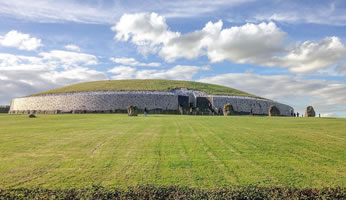Archeoastronomy
3.6 - Understand how the gradual precession of the Earth’s axis affects the appearance of the Sun, Moon and stars, when observed from Earth, and its use in archaeoastronomy7.2 - Understand that the current celestial alignment of ancient monuments differs from their original celestial alignment due to the precession of the Earth’s axis
If you have read the ancient observations page you will know how our ancestors erected monuments to make astronomical observations. I'll try not to repeat myself too much...
Circumpolar Stars had a special place in the ancient Egyptian culture as the stars were always in the sky and was a place of heaven and the afterlife. Small shafts ran through the pyramid from the resting place of the Pharoah inside so, it is believed, his spirit could go to the afterlife. One shaft would point to the rotation path of Orion. The other shaft pointed to Thuban, the celestial north pole star. Yes that's right. Thuban, not Polaris which would have been called Phoenice back then.
Newgrange in Ireland is the site of an ancient burial mound built 5,000 years ago. It is designed along a long underground passage. Light enters the passage four minutes after sunrise on the winter solstice. Simulations have shown it would have entered at exactly sunrise when it was built.
Stonehenge has many theories about its astronomical importance, not all of them proved as over time the stones has deteriorated and one of the important stones that acted as an astronomical marker disappeared. It is highly likely to have been used to mark the sunrise on the summer solstice and sunset on the winter solstice. And yet we can only take approximate readings of these as the actual positions and timings would have looked slightly different from today.
Precession has caused the celestial pole star to move and the sun to rise at a different time.
What was the direction of the celestial pole star has moved somewhere else. Polaris is actually moving near the exact celestial pole star but in time will move past it and in 14,000 years time the star Vega will be the nearest bright pole star.
Sunrise still occurs at Newgrange of course but the direction of the Sun has changed and so the Sun rises later.
The subject of Archeoastronomy is fascinating and it is definitely worth your time to research how our ancestors viewed the heavens.
Links
- Portal to the Heritage of Astronomy
- Newgrange World Heritage Site
- Ancient Origins Newgrange and effects of precession
- University of Arizona Beginnings of Astronomy






 | © All Rights Reserved |
| © All Rights Reserved |